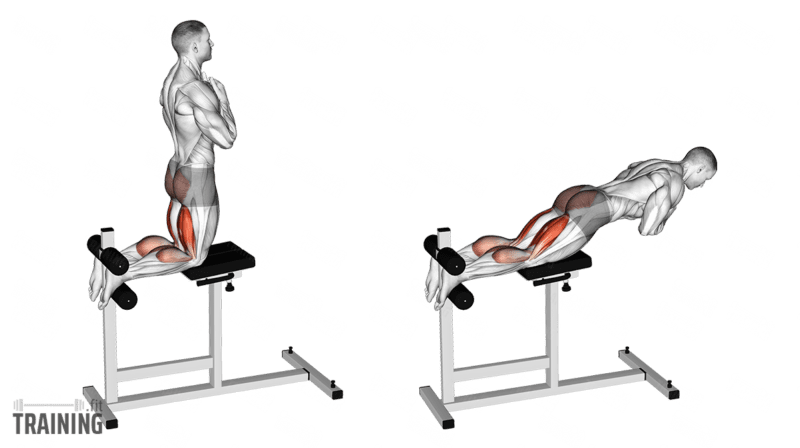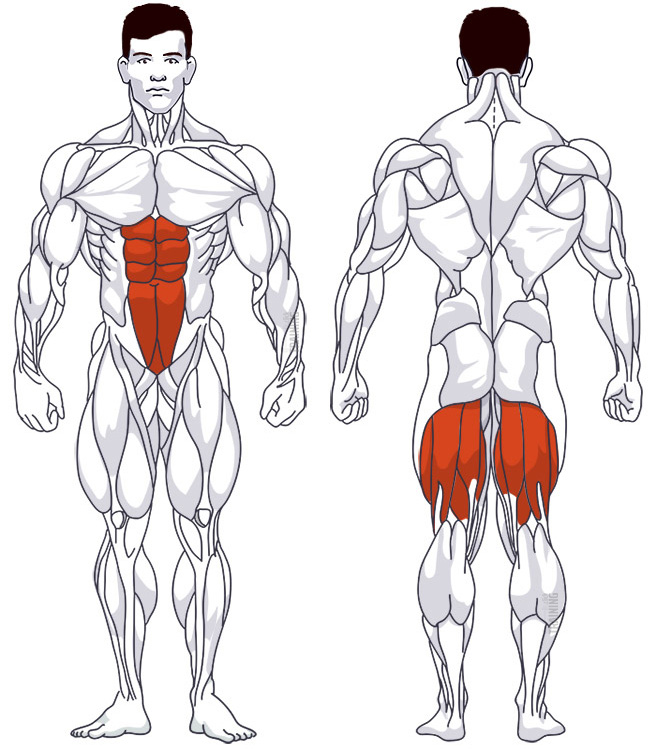Hanging Leg Curl
Compound exercise, MachineOverview

Main muscles
- Abdomen: Straight abdominal muscle
(Musculus rectus abdominis) - Abdomen: Square lumbar muscle
(Musculus quadratus lumborum) - Abdomen: Transverse abdominal muscle
(Musculus transversus abdominis) - Thigh: Thigh flexor
(Musculus biceps femoris)
Training plans
Hanging Leg Curl is a suitable substitute for similar exercises in rear thigh training or as a supplement to various training plans.
Hanging Leg Curl: Basics and alternatives

Involved main muscle groups:
Hanging Leg Curl
The hanging leg curl is a unique leg exercise that is related to the classic lying leg curl. However, it reverses the movement. Instead of keeping your upper body still and moving your feet, your feet are locked in place while your upper body moves in this variation.
This reverse motion engages your core more, requiring greater focus and strength to maintain proper form. This makes the exercise better suited for advanced athletes rather than beginners.
Finding the right equipment for hanging leg curls can be challenging, as many gyms don’t have the specific machine. Alternatively, you can perform the exercise without a machine, as long as you can safely lock your legs in place.
Correct execution
It’s best to perform hanging leg curls using a machine designed for this purpose. Machines can vary in knee pad design, footrest settings, and handle availability. So, familiarize yourself with the machine in your gym before starting.
If you don’t have access to the right machine, you can use other fixtures to lock your legs, but keep these two things in mind:
- Only use a mount that can securely hold several times your body weight.
- Choose supports with adequate padding to avoid putting unnecessary strain on your knees.
You can even do this exercise at home, such as by placing your feet under a sofa and resting your knees on a soft support.
In general, using the right machine is preferable. If your gym doesn’t have one, consider switching to regular leg curls or using free weights to target your hamstrings.
Video tutorial
Step-by-step instructions
Adjust the foot locks’ distance based on your height. Your knees should rest securely on the pad while allowing you to extend your legs without stressing your knee joints. Use the handles found on most machines to test the movement carefully without bearing your full weight.
Once everything is set up, wedge your feet between the pads and kneel on the knee pad.
Keep your upper body upright and avoid rounding your back.
Place your hands on your chest.
Slowly lean your upper body forward by extending your knees, without fully straightening them.
Raise your torso by bending your knees, keeping your back straight throughout the exercise.
Common mistakes
The biggest challenge most people face with this exercise is maintaining proper form. Since the hanging position requires significant core strength, it’s crucial to maintain tension throughout the exercise.
Ensure the movement comes primarily from your knees, not your back or hips. In other words, move your upper body by extending and curling your legs.
Setting up the machine to fit your body size is also essential for correct execution. If the foot locks and knee support are too far apart, your thighs will touch the surface, making it difficult to bend your legs.
Some YouTube videos demonstrate hanging leg curls using a barbell bar to hold the feet in place. If you try this method, ensure the bar is securely attached to the rack to avoid injuries.